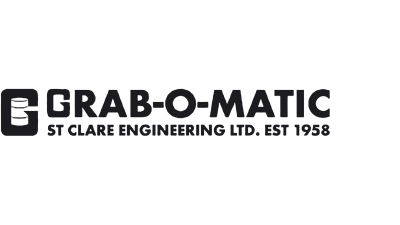In today’s digital era, having a strong online presence is crucial for businesses of all sizes. As competition continues to grow, it becomes essential to ensure that your website stands out and attracts the right audience. This is where Search Engine Optimisation (SEO) comes into play. In this article, we will explore the importance of using SEO to optimise website traffic, enhance performance, and achieve better results. Let’s dive in!

Section 1: Understanding SEO and its Significance
Search Engine Optimisation (SEO) is the process of optimising your website and its content to improve its visibility and ranking in search engine results. SEO encompasses a wide range of techniques and strategies aimed at making your website more search engine-friendly, thereby attracting organic traffic.
In this section, we will discuss the significance of SEO and its impact on website performance. We will explore how SEO helps you reach your target audience, increase brand visibility, and build credibility. Additionally, we will highlight the importance of keyword research, on-page optimisation, and user experience in achieving optimal SEO results.
SEO (Search Engine Optimisation) is a crucial aspect of website development and digital marketing strategy. It refers to the process of optimising a website to improve its visibility and ranking on search engine result pages (SERPs). The significance of SEO and its impact on website performance are as follows:
Increased Organic Traffic: SEO helps websites rank higher in search engine results, leading to increased organic (non-paid) traffic. When a website appears on the first page of search results, it receives more visibility and exposure to potential visitors. Higher organic traffic can result in more leads, conversions, and revenue for businesses.
Improved User Experience: SEO involves optimising various on-page and off-page elements of a website to enhance user experience. Factors like website speed, mobile-friendliness, easy navigation, and relevant content all contribute to a positive user experience. When users find a website user-friendly and engaging, they are more likely to stay longer, explore more pages, and convert into customers.
Enhanced Credibility and Trust: Websites that appear higher in search results are often perceived as more credible and trustworthy by users. SEO techniques such as optimising content, building high-quality backlinks, and ensuring a secure website can help establish a positive online reputation. Building trust with users is essential for attracting and retaining customers in the long run.
Targeted Traffic and Relevant Audience: SEO enables businesses to target specific keywords and optimise their website accordingly. By ranking for relevant keywords related to their products or services, websites can attract a highly targeted audience actively searching for those offerings. This targeted traffic increases the chances of conversions, as visitors are more likely to engage and make purchases.
Cost-Effectiveness: Compared to other forms of digital marketing, SEO can provide a high return on investment (ROI). While initial optimisation efforts may require resources and time, the long-term benefits of increased organic traffic and visibility outweigh the costs. Unlike paid advertising, where costs are ongoing, SEO efforts can continue to drive traffic and conversions even after the initial optimisation is done.
Long-Term Sustainability: SEO is an ongoing process that requires consistent effort and monitoring, but its impact can be long-lasting. Once a website establishes a strong online presence and earns a high-ranking position, it becomes more difficult for competitors to displace it. Continual optimisation and staying updated with SEO best practices help websites maintain their visibility and adapt to changing search engine algorithms.
In conclusion, SEO is significant for website performance as it drives organic traffic, improves user experience, builds credibility, targets the right audience, provides a cost-effective marketing strategy, and offers long-term sustainability. Incorporating SEO into website development and digital marketing strategies is essential for businesses to succeed in the highly competitive online landscape.

Section 2: Driving Organic Traffic through SEO
One of the primary goals of SEO is to drive organic traffic to your website. Organic traffic refers to visitors who find your website through non-paid search engine results. Compared to paid advertising, organic traffic has long-term benefits and higher conversion potential.
In this section, we will delve into the various strategies that can be employed to attract organic traffic. We will explore the importance of optimising website structure, creating high-quality and engaging content, building backlinks, and leveraging social media. By implementing these SEO tactics, you can increase your website’s visibility and reach a wider audience.
Attracting organic traffic to your website is crucial for gaining visibility, increasing brand awareness, and reaching a wider audience without relying solely on paid advertising. To achieve this, you can employ several effective strategies:
Optimising Website Structure:
Ensure your website has a clean and user-friendly design with easy navigation. Use a logical hierarchy of pages and a well-organised menu structure.
Implement responsive design to ensure your website is mobile-friendly, as an increasing number of users access the internet through mobile devices.
Improve page load speed by optimising images, enabling browser caching, and utilising a content delivery network (CDN).
Creating High-Quality and Engaging Content:
Content is the backbone of any successful SEO strategy. Create valuable, informative, and relevant content that addresses your target audience’s needs and interests.
Use different content formats like blog posts, articles, infographics, videos, and podcasts to cater to diverse user preferences.
Incorporate relevant keywords naturally within your content, but avoid keyword stuffing, as it can negatively impact user experience and search engine rankings.
Building Backlinks:
Backlinks, also known as inbound links, are links from other websites that point to your site. They are an essential factor in search engine rankings.
Focus on acquiring high-quality, authoritative backlinks from reputable websites in your niche. You can achieve this by creating link-worthy content, guest posting, and networking with other website owners.
Avoid spammy link-building practices, as they can lead to penalties from search engines.
Leveraging Social Media:
Social media platforms provide an excellent opportunity to connect with your target audience and promote your content.
Share your blog posts, videos, and other content on social media channels to increase visibility and encourage user engagement.
Engage with your followers, respond to comments, and participate in relevant discussions to build a strong online community.
On-Page SEO Optimisation:
Optimise meta titles, meta descriptions, and header tags (H1, H2, H3, etc.) to include relevant keywords and attract search engine attention.
Use descriptive and keyword-rich URLs for your pages.
Ensure your website has a sitemap, which helps search engines index your content more effectively.
User Experience (UX) Optimisation:
Focus on providing a positive user experience to visitors. This includes easy-to-read content, clear calls-to-action (CTAs), and intuitive navigation.
Reduce bounce rates and increase user engagement to signal to search engines that your site is valuable and relevant.
Local SEO:
If your business serves a specific geographic area, optimise for local searches. List your business on Google My Business and other local directories.
Encourage customer reviews and respond to them, as positive reviews can boost your local search rankings.
Monitoring and Analysing Performance:
Regularly track your website’s performance using tools like Google Analytics and Google Search Console.
Analyse user behaviour, traffic sources, and other relevant metrics to identify areas for improvement and refine your SEO strategies.
Remember that SEO is an ongoing process, and it may take time to see significant results. Be patient, consistent, and continue adapting your strategies to meet the changing needs of your audience and the search engine algorithms.

Section 3: Enhancing Website Performance with SEO
SEO not only improves your website’s visibility but also plays a significant role in enhancing its performance. A well-optimised website tends to have faster loading times, better user experience, and higher conversion rates.
In this section, we will discuss the importance of website speed optimisation, mobile responsiveness, and user-friendly navigation. We will explore the impact of these factors on user satisfaction and search engine rankings. Additionally, we will touch upon the significance of technical SEO, including XML sitemaps, structured data, and canonical tags, in improving website performance.
Website speed optimisation, mobile responsiveness, and user-friendly navigation are critical aspects of web development that significantly impact user satisfaction and search engine rankings. Implementing these factors ensures a positive user experience, which is essential for retaining visitors and achieving higher rankings on search engine results pages (SERPs). Additionally, technical SEO elements like XML sitemaps, structured data, and canonical tags play a pivotal role in enhancing website performance and search engine visibility.
Website Speed Optimisation
Website speed refers to how quickly a web page loads its content. It is a crucial factor as users expect fast-loading websites. Slow-loading pages can lead to high bounce rates, where users leave the site before it even loads completely. Moreover, in an age of instant gratification, users are less likely to wait for a sluggish website when there are faster alternatives available.
Impact on User Satisfaction: A fast-loading website enhances user experience, reduces frustration, and increases engagement. Users are more likely to stay longer on the site, view multiple pages, and complete desired actions, such as making purchases or subscribing to newsletters.
Impact on Search Engine Rankings: Search engines, especially Google, consider website speed as a ranking factor. Faster websites are more likely to rank higher in search results. Google’s Page Experience update, which emphasises the importance of user experience, includes Core Web Vitals, metrics that measure website loading speed and user interaction responsiveness.
Mobile Responsiveness
With an increasing number of users accessing the internet on mobile devices, having a mobile-responsive website is no longer optional. Mobile responsiveness ensures that a website adapts to various screen sizes and devices, offering an optimal viewing experience across smartphones, tablets, and desktops.
Impact on User Satisfaction: A mobile-responsive website is easy to navigate and read on smaller screens, creating a seamless experience for mobile users. Visitors are more likely to engage with a website that caters to their preferred device, leading to higher user satisfaction.
Impact on Search Engine Rankings: Mobile-friendliness is a significant ranking factor for search engines. Google uses mobile-first indexing, which means it primarily considers the mobile version of a website for ranking and indexing purposes. Websites that are not mobile-responsive may experience a drop in search engine rankings, especially on mobile search results.
User-Friendly Navigation
Intuitive and user-friendly navigation is crucial for ensuring visitors can easily find what they are looking for on a website. A well-organised navigation structure and clear calls-to-action improve the overall user experience and encourage visitors to explore the site further.
Impact on User Satisfaction: Easy navigation allows users to find information or products efficiently, reducing frustration and increasing satisfaction. Visitors are more likely to return to a site with clear navigation and positive user experience.
Impact on Search Engine Rankings: Search engines assess user behaviour metrics, such as bounce rate and time on site, to determine the relevance and quality of a website. A user-friendly navigation system can lead to improved user engagement, positively impacting search engine rankings.
Technical SEO Elements
Technical SEO involves optimising the website’s infrastructure and backend to improve its visibility and performance on search engines. Key technical elements include XML sitemaps, structured data, and canonical tags.
XML Sitemaps: XML sitemaps help search engines understand the structure and hierarchy of a website, making it easier for them to crawl and index its pages. Having an updated sitemap ensures that all relevant pages are indexed, increasing the chances of appearing in search results.
Structured Data: Implementing structured data (e.g., Schema.org markup) provides search engines with additional context about the content on a website. This helps search engines display rich snippets in search results, improving the website’s visibility and click-through rates.
Canonical Tags: Canonical tags inform search engines about the preferred version of a web page when multiple versions with similar content exist (e.g., www and non-www versions, HTTP and HTTPS). This prevents duplicate content issues and consolidates ranking signals to the preferred version, preventing potential negative impacts on search rankings.
Impact on Website Performance: Properly implemented technical SEO elements enhance website performance by ensuring efficient crawling, indexing, and displaying relevant rich snippets in search results. This can lead to higher organic traffic and improved user engagement.
Impact on Search Engine Rankings: Technical SEO is a foundational aspect of search engine optimisation. By providing search engines with clear signals about website content and structure, technical SEO elements contribute to better search rankings and increased visibility.
In conclusion, website speed optimisation, mobile responsiveness, user-friendly navigation, and technical SEO are crucial factors for improving user satisfaction, search engine rankings, and overall website performance. By prioritising these elements, webmasters and digital marketers can create a positive user experience while enhancing the site’s visibility and organic search traffic.

Section 4: Measuring Results and Maximising ROI
To make the most of your SEO efforts, it is crucial to measure and analyse the results. By tracking key metrics and understanding user behaviour, you can fine-tune your SEO strategy and maximise your return on investment (ROI).
In this final section, we will explore the various tools and techniques for measuring SEO performance. We will discuss the importance of tracking keyword rankings, analysing website traffic, monitoring conversion rates, and utilising analytics platforms such as Google Analytics. Additionally, we will highlight the significance of ongoing optimisation and staying up-to-date with the latest SEO trends and algorithm updates.
Measuring SEO performance is essential to understand the effectiveness of your optimization efforts and identify areas for improvement. Various tools and techniques are available to track and analyse SEO performance, allowing you to make data-driven decisions to enhance your website’s search engine visibility and user engagement. Some key aspects of measuring SEO performance include:
Tracking Keyword Rankings: Keyword rankings indicate how well your website is performing in search engine results for specific keywords. Numerous tools, both free and paid, are available to monitor keyword rankings. By tracking keyword positions over time, you can evaluate the impact of your SEO strategies and identify opportunities to improve rankings for important keywords.
Analysing Website Traffic: Measuring organic website traffic is crucial for understanding the overall effectiveness of your SEO efforts. Tools like Google Analytics provide valuable insights into the number of visitors, their behaviour, and the sources driving traffic to your site. Analysing traffic data helps you identify popular landing pages, user engagement patterns, and potential areas of improvement.
Monitoring Conversion Rates: SEO is not just about driving traffic; it’s also about converting visitors into customers or achieving specific goals (e.g., sign-ups, purchases, downloads). Monitoring conversion rates helps you assess the quality of your traffic and the effectiveness of your website in driving desired actions. This information can guide you in optimising your site for better conversions.
Utilising Analytics Platforms (e.g., Google Analytics): Google Analytics is a powerful and widely used web analytics platform that provides comprehensive data on website performance. It offers various reports, such as audience demographics, user behaviour, and traffic sources. Utilising such analytics platforms allows you to understand user preferences and make data-backed decisions to enhance user experience and SEO performance.
Ongoing Optimization: SEO is not a one-time task; it requires continuous improvement and adaptation. Regularly update and optimise your website’s content, meta tags, and technical aspects to stay relevant and competitive. Regular audits and improvements based on data analysis help maintain and improve search rankings over time.
Staying Up-to-Date with SEO Trends and Algorithm Updates: Search engines frequently update their algorithms, which can significantly impact search rankings. Staying informed about the latest SEO trends and algorithm changes is crucial to adapt your strategies and avoid potential penalties. Following reputable SEO blogs, attending industry conferences, and engaging with SEO communities can help you stay current and make informed decisions.
Backlink Analysis: Backlinks are a crucial aspect of SEO, as they signal to search engines that your content is valuable and authoritative. Monitoring and analysing your backlink profile can help you identify opportunities to acquire high-quality links and disavow harmful or spammy links that may negatively impact your rankings.
Analysing Competitor Performance: Understanding how your competitors are performing in the search results can provide valuable insights into your own SEO strategy. Competitor analysis can reveal potential keyword opportunities, content gaps, and areas where you can outperform your competitors.
By combining these tools and techniques, you can effectively measure SEO performance, identify areas for improvement, and implement strategies to enhance your website’s visibility, user engagement, and conversions. SEO is an ongoing process that requires continuous monitoring, optimization, and adaptation to stay ahead in search engine rankings and deliver a positive user experience.
Conclusion: In conclusion, SEO plays a pivotal role in optimising website traffic, enhancing performance, and achieving better results. By implementing effective SEO strategies, businesses can attract organic traffic, improve their website’s visibility, and enhance user experience. Furthermore, measuring and analysing SEO results empowers organisations to refine their strategies, maximise ROI, and stay ahead of the competition. Embracing SEO is no longer an option but a necessity for businesses that want to thrive in the digital landscape.








































